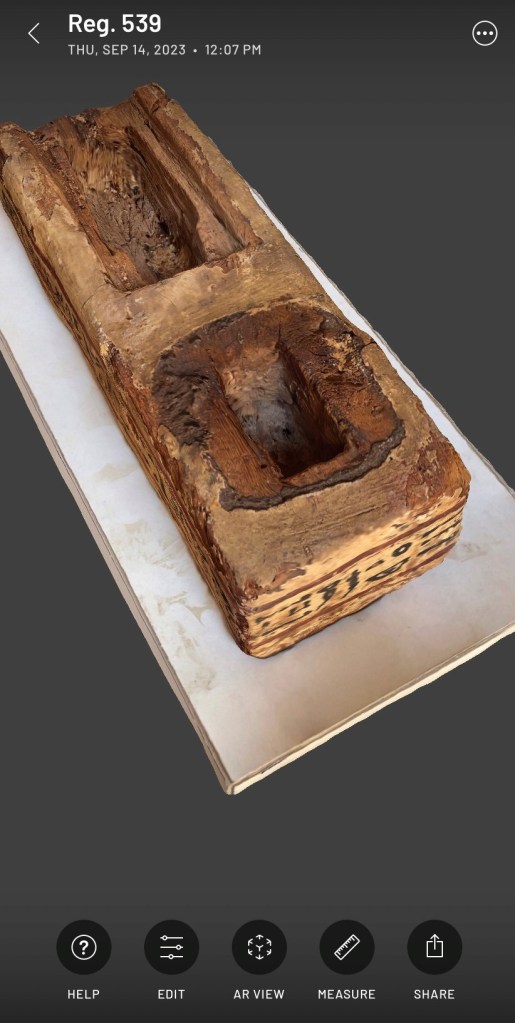Just one week ago, I had the pleasure of working on coffins from the tomb of Ankh-Hor in the main magazine of the Egyptian authorities on the West Bank – we brought them there in the 2000s and I had the chance to open some boxes for the first time since 15 years. This really was exciting!
All in all, thanks to the support of our Egyptian colleagues, I spent three days of work (Oct. 1-3, 2023) in the magazine of the West Bank. The main aim was to join newly found fragments to coffins which were transported in previous years to the magazine. This was one Ptolemaic painted coffin transported in 2007, Reg. 655. One joining piece could be fitted to the inner part of the shoulder of this coffin. I also relocated several loose fragments of the lid in our magazine, but these are not matching to each other, illustrating the destruction of the lid of the coffin when looters removed by force the mummy from within.

I documented the complete coffin Reg. 655, owned by a Ptolemaic priest with the name of Padiaes, using infrared photography – a technique I did not use back in 2007 and which is therefore a great complementary documentation. This allowed to trace not only all the texts but also small details of the drawings of the figures. Like in 2007, I am just really thrilled by the execution of these details!

Using the app Scaniverse, the coffin of Padiaes was also captured in 3D. I made one scan with the fitting face part of the coffin lid, comprising of mask and wig, and one without it. These 3D models will allow us to digitally reconstruct the complete coffin, ideally also placing the not-fitting fragments of the lid in their original position.

The second coffin for which matching pieces were found in the past years is Reg. 656, the beautiful coffin of the temple singer Aset-em-Akhbit III transported to the magazine just in 2021. Our conservators joined one fitting piece to the lateral side of the lid. Reg. 656 was, like Reg. 655, scanned in 3D and documented in its new shape with our full-frame camera.


Apart from the matching of joining pieces to these two coffins, our goal for the work in the magazine was to update the documentation of the objects. I managed to study a total of 18 objects, making high-resolution photos, 3D scans and infrared photography. My personal highlight was the reunion with the inner coffin of Wakhibre, one of the rare in situ burials of the 30th Dynasty excavated in Thebes and a very special piece.
For facilitating this important work in the magazine of the West Bank, I am very thankful to Ahmed Hassan, Chief Director of the Magazines of the West Bank as well as to Ahmed Ezz, Director of the Magazine. I am grateful to our conservators Karima Mohamed and Mohamed Mahmoud for their excellent job fitting the joining pieces to Reg.655 and Reg. 656. I would also like to thank Nefisa Elazab Mohamed who functioned as an inspector during my work in the magazine and was very helpful. I hope to be back there in the next season – 3D scans and infrared photos are waiting for other objects from the tomb of Ankh-Hor!


